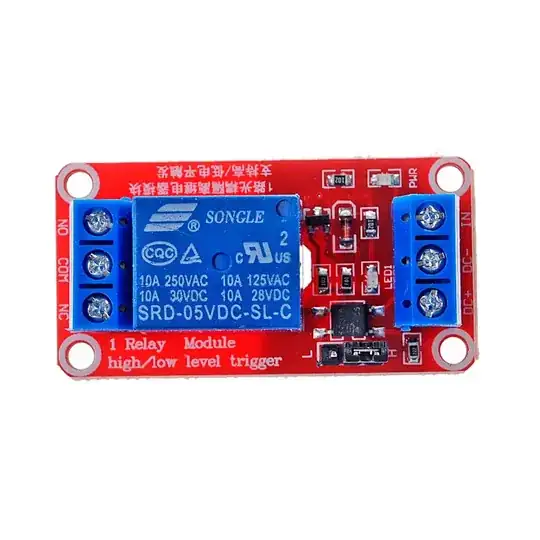As title states, I am taking my first steps into electric circuits and microcontrollers, so I apologize in advance if my question is not clear or does not make much sense.
I am trying to control several (3 for now, I am aiming 8) relays modules (picture below), by using a raspberry pi zero W. I tried to power the relay by using an external 5v power source (phone charger + and - to DC+ and DC-) and connect the IN to the GPIO pin but it didn't work. Then I tried to power the relay directly with the board (5V to DC+ and GND to DC-) and now it works properly. Why is that? I started to read about the functioning of 5v relay modules here but I found discordant opinions on whether it is safe to connect the relays directly to the board, and as far as I understood it depends on how much current in mA the relay is drawing. Some customers posted this in the comment section under the same board I purchased: quiescent current (to 5 V): approx. 3 mA working current (to 5 V): approx. 75 mA control current (at 5 V on the optocoupler): approx. 1.7 mA
Which is the one I have to check? working current or control current? or both?
Also, could be that since I connected the DC- to the negative wire (and not to GND on the board) the reason why it did not work with the external power supply?
What is the risk of using the relay module directly wired with the board? I red that I could connect the GPIOs to a transistor uln2803 to increase the voltage going into the IN but I have no clue how to do it and what difference it makes. Also,I am planning to control 220v devices with some of these relays.
p.s. the relay board is set to HIGH at the moment.
sorry for the confusion but I am in the low point of the learning curve still XD
UPDATE: I found that for this problem some people uses this transistor for interfacing the Pi with the relay INs:
ULN 2803A STM EIGHT DARLINGTON ARRAYS
Features: EIGHTDARLINGTONS WITHCOMMONEMITTERS OUTPUT CURRENT TO 500 mA OUTPUT VOLTAGE TO50 V INTEGRAL SUPPRESSIONDIODES VERSIONS FOR ALL POPULARLOGIC FAMILIES OUTPUT CAN BE PARALLELED INPUTS PINNED OPPOSITE OUTPUTS TO SIMPLIFYBOARDLAYOUT
Why it does say up to 50V? how do I regulate the output voltage? In this way there would be no risk of current going "back" to the Pi from the relay?
